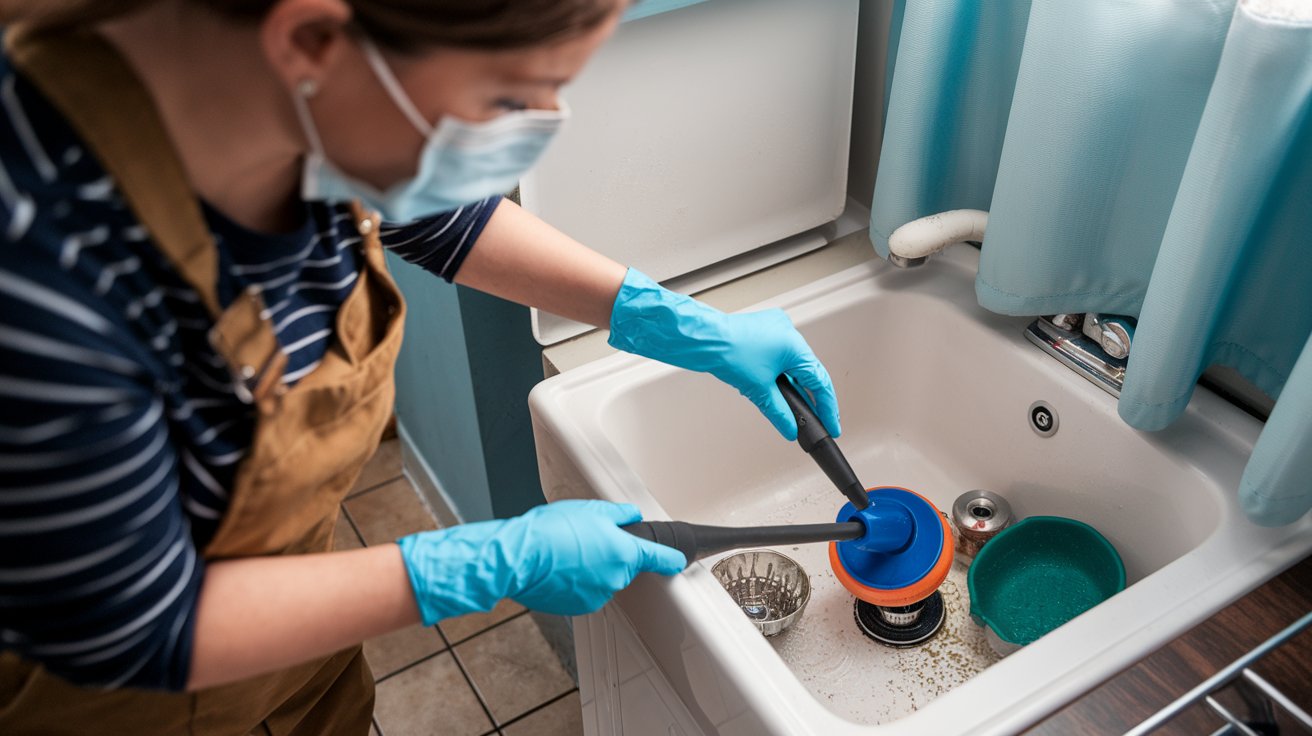Best Way to Clean a Garbage Disposal Safely

There’s something oddly reassuring about a humming garbage disposal — until the familiar grinding sound turns sour, accompanied by mysterious odors wafting from your kitchen sink. A dirty disposal can become a hidden hazard in any household. Not only does it cause unpleasant smells, but it can also harbor harmful bacteria, clog your pipes, and attract unwanted pests.
Cleaning your garbage disposal isn’t as intimidating as it sounds. In fact, with the right approach, it can be quick, safe, and even a little satisfying. And in many cases, cleaning your disposal gives you the perfect opportunity to inspect other parts of your plumbing — including learning how to clean a P-trap, which is another common area where food waste and grime like to collect.
Whether your disposal is starting to smell or you just want to keep it in peak condition, this guide will walk you through the safest and most effective methods to clean and maintain it — using both everyday ingredients and smart, preventative habits.
Why Cleaning Your Garbage Disposal Matters
Garbage disposals handle food scraps with ease — until they don’t. Over time, bits of food can stick to the blades and walls, leading to mold, mildew, and a seriously foul stench. Left unchecked, it can cause your disposal to clog, damage your plumbing, or even break down entirely.
Proper cleaning not only eliminates odors but also extends the life of your appliance, ensures your kitchen stays sanitary, and prevents other parts of your plumbing — like your sink drain or P-trap — from becoming clogged with greasy residue.
Common Signs Your Garbage Disposal Needs Cleaning
Your garbage disposal usually gives off clues when it’s due for a cleaning:
-
Persistent, sour or rotten odors
-
Gurgling or grinding noises
-
Sluggish draining
-
Fruit flies or gnats in the kitchen
-
Water backing up in the sink
If you’re experiencing any of these signs, your disposal may not be the only problem — consider also learning how to clean a P-trap to keep the entire system flowing smoothly.
How to Clean a Garbage Disposal Safely: Step-by-Step
Let’s dive into the safest and most efficient ways to get your disposal back to clean, fresh, and fully functional.
1. Always Cut the Power First
Before putting your hands anywhere near the disposal, unplug it or shut off the power at the breaker. This ensures there’s no risk of accidental activation — a simple but crucial safety step.
2. Remove Visible Debris
With a flashlight, inspect the disposal’s chamber and remove any visible food scraps or gunk using tongs or pliers — never your fingers. Rotting food can often get trapped under the splash guard or around the impellers, contributing to that awful smell.
3. Clean the Splash Guard
The black rubber flaps (called the splash guard or baffle) are a notorious grime magnet. Pull it up gently and scrub both sides with an old toothbrush or a scrub brush dipped in warm, soapy water. Rinse thoroughly before putting it back.
4. Use Ice and Salt for Internal Scrubbing
This classic trick uses the disposal itself as a cleaning tool:
-
Pour 1–2 cups of ice cubes into the disposal.
-
Add ½ cup of coarse salt (rock salt or sea salt works best).
-
Turn on the cold water, then run the disposal for 30 seconds.
The salt scrubs the inside while the ice knocks loose stuck-on debris. It’s quick, effective, and helps sharpen the blades slightly.
5. Deodorize with Citrus Peels and Vinegar
Want a fresher-smelling kitchen in minutes? Citrus and vinegar are your best friends.
Method:
-
Toss in peels from a lemon, lime, or orange.
-
Follow with ½ cup of baking soda.
-
Pour in 1 cup of vinegar and let it fizz for a few minutes.
-
Flush with hot water and run the disposal.
The acid from citrus and vinegar helps break down gunk and neutralizes odors — plus, it leaves your sink smelling great.
6. Deep Clean with Baking Soda and Boiling Water
If you need a more thorough cleanse:
-
Sprinkle ½ cup of baking soda down the disposal.
-
Wait 10 minutes.
-
Slowly pour in 2–3 cups of boiling water.
This combo loosens greasy buildup and clears any residue that’s hiding deeper in the system. Use caution with boiling water and only pour it after the fizzing stops.
Natural Cleaning Combo Recipe
Try this DIY blend once a week to keep your disposal clean:
-
½ cup baking soda
-
1 cup white vinegar
-
1 tray of ice cubes
-
1 tablespoon salt
-
Citrus peel (optional)
-
Boiling water (as final flush)
Run this sequence in that order for maximum effect. It tackles odor, clogs, and stuck-on grease all at once.
What NOT to Do When Cleaning a Garbage Disposal
-
Never pour bleach or drain cleaner down your disposal — they’re corrosive and can damage internal parts.
-
Avoid using your fingers to remove debris, even when it’s off. Always use tools.
-
Don’t flush large food particles or fibrous vegetables like celery and corn husks.
-
Never use hot water during grinding. Hot water melts grease, which can then solidify in your pipes.
Preventative Tips for a Cleaner Disposal
-
Run cold water during and after using the disposal to flush everything through.
-
Avoid grinding fat, grease, or starchy foods like rice or pasta — they form sticky paste inside.
-
Grind small food scraps only — not bones, pits, or shells.
-
Flush regularly with baking soda and vinegar to keep everything flowing.
A little daily care goes a long way. Combine these habits with regular splash guard cleaning, and your garbage disposal will stay odor-free and efficient.
Consider Cleaning the P-Trap Occasionally
If you’ve deep-cleaned your disposal and still notice foul smells or clogs, the issue might be in the plumbing beneath. That’s where learning how to clean a P-trap becomes valuable. The P-trap, a curved section of pipe under your sink, often holds debris and stagnant water — perfect conditions for odors and bacteria.
Removing and rinsing the P-trap once or twice a year can drastically improve your drainage system’s overall hygiene and performance.
When to Call a Professional
If you notice persistent clogs, a disposal that hums but doesn’t spin, or water leaking beneath the sink, it’s time to bring in a plumber. DIY is great for routine cleaning, but some problems — especially motor or electrical failures — are best left to the pros.
Also, if you suspect that something hard (like glass or metal) has fallen into the disposal and is causing damage, don’t try to retrieve it yourself. Call for help to prevent injury or further appliance issues.
Conclusion
A clean garbage disposal is the silent hero of your kitchen — quietly grinding, flushing, and preventing food waste from turning into a plumbing nightmare. The best part? Keeping it clean is simple and safe with just a few household ingredients and regular habits.
From citrus peels and baking soda to ice and salt, your disposal doesn’t need toxic chemicals to shine. And while you’re at it, take the opportunity to explore how to clean a P-trap — ensuring your entire drainage system is clean, clear, and working like a charm.
Keep these tips in your kitchen care routine, and you’ll avoid clogs, odors, and costly repairs — all while making your sink smell like fresh lemons.




